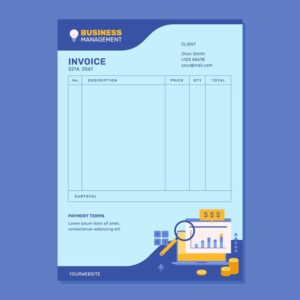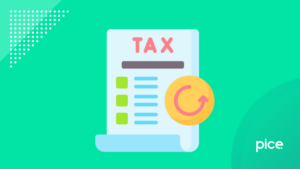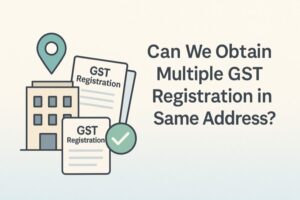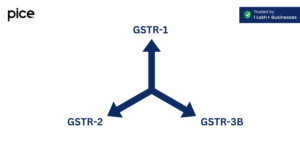How Does GST Work for a Sole Trader?
- 18 Jun 25
- 8 mins

How Does GST Work for a Sole Trader?
Key Takeaways
- GST is a value-added indirect tax applied to the supply of goods and services, classified under CGST, SGST, IGST, and UTGST.
- Sole traders must register for GST if annual turnover exceeds ₹20 lakhs or if engaged in inter-state or e-commerce supply, regardless of turnover.
- Voluntary GST registration allows businesses below the threshold to claim input tax credits and enhance credibility.
- Registered traders must include GST (typically 10%) in invoices and file regular returns through the Business Activity Statement (BAS).
- The GST registration process involves online application through the GST portal, document uploads, and verification, culminating in a GSTIN issuance.
Registration of Goods and Services Tax (GST) is a crucial and mandatory step for sole traders, ensuring their businesses follow tax laws. GST is a tax applicable on the sale of goods and services, and businesses earning a certain potential amount should register for it. Even if their income is much below the desired limit, they can opt for voluntary registration to avail themselves of tax credits.
Continue reading this blog to learn about the GST registration process, the relevant documents, eligibility criteria and more. Gaining the proper knowledge can help you manage GST obligations following a smooth process.
What is GST and its Types?
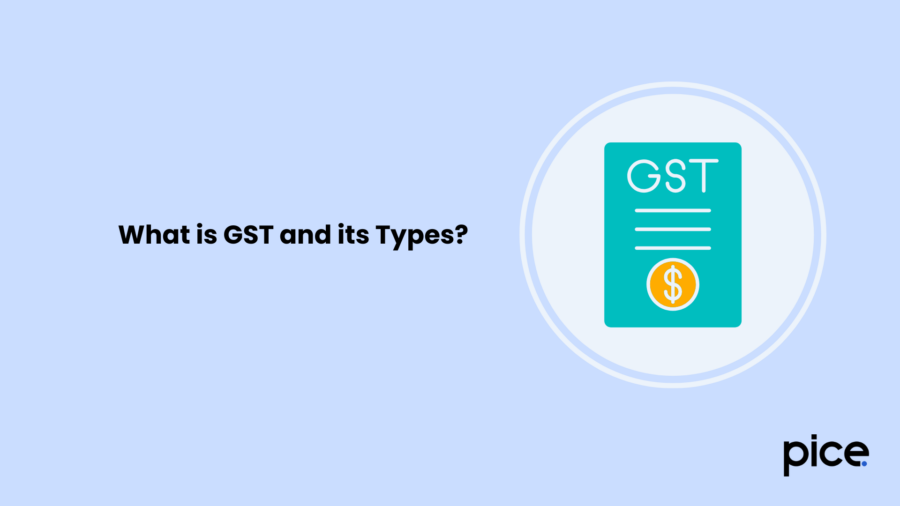
A Goods and Services Tax (GST) is a value-added tax levied particularly on the supply of goods and services for domestic consumer products. Therefore, GST is classified as a single indirect tax law for the whole country. This tax category is explicitly included in the final price of a product. A customer purchasing a product ends up paying the price of that particular product, including the GST.
Further, the sole proprietorship business or seller is responsible for forwarding a significant portion of GST to the government. The Central Government of India levies this kind of tax. For intrastate transactions, this category of tax is further distributed between the state and central government under CGST and SGST.
There are mainly four types of GST in India:
- CGST (Central Goods and Services Tax): Levied by the Central Government on intra-state (within the same state) supply of goods and services.
- SGST (State Goods and Services Tax): Levied by the respective State Governments on intra-state supply of goods and services.
- IGST (Integrated Goods and Services Tax): Levied by the Central Government on inter-state (between two states) supply of goods and services, as well as on imports.
- UTGST (Union Territory Goods and Services Tax): Levied in Union Territories (like Andaman and Nicobar Islands, Chandigarh, etc.) on intra-territory supply of goods and services, similar to SGST in states.
For intra-state transactions, CGST and SGST/UTGST are applicable, while for inter-state transactions, IGST is applicable. The revenue from CGST goes to the Central Government, SGST to the State Government, and UTGST to the Union Territory Government. The IGST revenue is shared between the Central and State Governments.
How Does GST Work for a Sole Trader?
As a sole trader in India, registering for GST is necessary if your annual turnover exceeds Rs. 20 Lakhs. However, you are still eligible to register voluntarily if the turnover amount is less than Rs. 20 Lakhs. Additionally, as a sole trader, if you continue operating in specific industries such as e-commerce or supplying goods to other states, GST registration is allowed, irrespective of your turnover.
Once you complete the registration process, charge 10% GST on your sales and include it in your invoice. Alongside this, lodge a Business Activity Statement (BAS) to report GST collected and claim credits for GST paid. Always maintain a good record for tracking your GST obligations and ensuring business compliance with tax laws.
How is GST Calculated?
The calculation of GST is quite simple and hassle-free with a GST calculator. Here are the following formulas to consider for calculating GST:
To consider GST in the Base Amount
- GST = (Original cost * GST tax rate) /100
- Base amount with GST = Original cost + GST
- For instance, if the original price of a good or service is Rs. 1000 and the GST rate is 20%, then,
- GST = (1000*20)/100 = 200
- Base amount with GST = 1000 + 200 = 1200
To Exclude GST from the Base Amount
- Base amount without considering GST = Base amount with GST / (1+ GST rate /100)
- For instance, if the required base amount with GST is 1200 and GST rate is 20%,
- The base amount without considering GST = 1200 / (1+20/100) = 5714
Do I Need to Include GST on My Invoice as a Sole Trader?
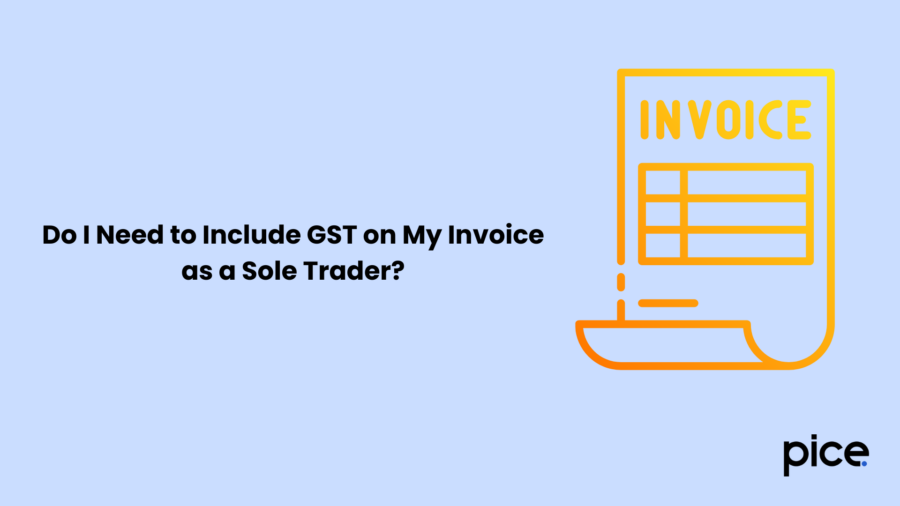
If you are a recognised sole trader, you should include GST on your invoice only if you are registered for GST. Registration is necessary if your annual business turnover is less than Rs. 20 Lakhs.
Moreover, your invoice should include a 10% GST amount if you are a registered single person. If you are not registered, do not include GST in your invoices. Instead, generate a simple and regular invoice without GST. Maintaining proper records helps you manage your tax-related responsibilities easily.
GST Registration Process for Sole Proprietorship
The GST registration process followed for sole proprietor is quite simple and can easily be done following the below steps:
- Log in to the GST Portal
To start the GST registration process, you need to visit the GST unified portal.
2. Create an Account
Next, provide your phone number and email ID to create an account on the website. The system then sends out an OTP to verify your bank account details along with your email ID and contact number.
3. Fill Out All Relevant Details
In this step, you should further complete the GST registration business account form. Here, filling out the GST REG-01 form is mandatory. The essential documents to submit here for document verification are the legal status, trade name and location of the business. Along with this, also provide the PAN and Aadhaar details of the owner. Furthermore, make sure to mention if you are selling goods or rendering services.
4. Upload Relevant Documents
This step lets you scan copies of documents and upload them. These documents include identity proof, business address proof, and bank account details.
5. Verification by GST Officer
After submission, a GST officer will go through your application form. In certain instances, the officer might also ask you for more information or a clear explanation.
6. Generation of GSTIN
If the submitted application is error-free, you will receive a GST Identification Number (GSTIN) along with a valid GST registration certificate.
Conclusion
To conclude, registration for GST as a sole trader is an easy process that allows your business to stay financially efficient. Once you complete the registration process in the GST portal, you must collect GST from your respective customers, file tax returns, and maintain proper records for easy tracking. It might seem complex at first, but understanding the basic concepts makes it easier.
If needed, ask for professional advice to prevent mistakes. Undergoing a proper registration process and maintaining compliance thereby ensures larger businesses' involvement in a smooth process and gains customer trust.
💡If you want to streamline your invoices and make payments via credit or debit card or UPI, consider using the PICE App. Explore the PICE App today and take your business to new heights.
FAQs
Is GST registration mandatory for all sole traders?
What are the benefits of voluntary GST registration?
What documents are required for GST registration?
PAN and Aadhaar of the owner
Proof of business address
Bank account details
Passport-size photo
Legal business documents (if applicable)
These documents are uploaded online during the application process.
 By
By 








